California Kingsnake - Lampropeltis californiae
(Blainville, 1835)(= Lampropeltis getula californiae)
Description • Taxonomy • Species Description • Scientific Name • Alt. Names • Similar Herps • References • Conservation Status
| Pictures and information about this species and its habitat have been put on three pages:
Page 1, this page, includes pictures of the more common banded form of the California Kingsnake, a range map, a species description and natural history information, references, and links to more information. Page 2 illustrates naturally-occurring aberrant morph California Kingsnakes. Page 3 shows some of the wide variety of habitats utilized by this snake. |
|||||||||||||||||||||||||||||||||||||||||||||||||||
 |
|||||||||||||||||||||||||||||||||||||||||||||||||||
| Brown and cream adult, Santa Clara County © James Rowe | |||||||||||||||||||||||||||||||||||||||||||||||||||
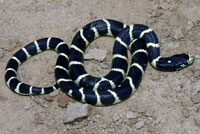 |
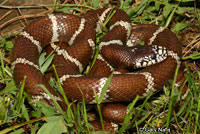 |
 |
 |
||||||||||||||||||||||||||||||||||||||||||||||||
| Black and cream sub-adult, Kings County |
Brown and cream adult, Yuba County | ||||||||||||||||||||||||||||||||||||||||||||||||||
 |
 |
 |
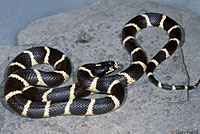 |
||||||||||||||||||||||||||||||||||||||||||||||||
| Black and white desert phase adult, Inyo County desert |
Black and cream adult, San Diego County mountains | Black and cream adult, eastern Alameda County |
|||||||||||||||||||||||||||||||||||||||||||||||||
 |
 |
 |
 |
||||||||||||||||||||||||||||||||||||||||||||||||
| Black and cream adult, Inyo County | Dark brown and cream adult, coastal San Luis Obispo County |
||||||||||||||||||||||||||||||||||||||||||||||||||
 |
 |
 |
|||||||||||||||||||||||||||||||||||||||||||||||||
| Black and cream adult, Inyo County | Dark brown and pale yellow adult, Yuba County | ||||||||||||||||||||||||||||||||||||||||||||||||||
 |
 |
 |
 |
||||||||||||||||||||||||||||||||||||||||||||||||
| Black and white desert phase adult, San Diego County desert | Black and white desert phase adult, Inyo County |
||||||||||||||||||||||||||||||||||||||||||||||||||
 |
 |
 |
 |
||||||||||||||||||||||||||||||||||||||||||||||||
| Brown and cream adult, Lake County | Black and cream adult, Big Sur, Monterey County |
Dark brown and pale yellow adult, Alameda County | |||||||||||||||||||||||||||||||||||||||||||||||||
 |
 |
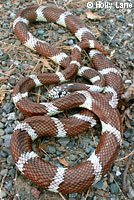 |
 |
||||||||||||||||||||||||||||||||||||||||||||||||
| Pale brown and yellow banded morph adult, Orange County. © Ivan Vershynin | A slightly faded Brown and Cream banded morph from the Santa Clara County mountains © Holly Lane |
||||||||||||||||||||||||||||||||||||||||||||||||||
 |
 |
 |
 |
||||||||||||||||||||||||||||||||||||||||||||||||
| A brown and cream banded morph adult from the Diablo Range in Santa Clara County © Holly Lane |
Santa Clara County adult seen everting its vent in a defensive display. © Yuval Helfman |
||||||||||||||||||||||||||||||||||||||||||||||||||
 |
 |
 |
 |
||||||||||||||||||||||||||||||||||||||||||||||||
| Adult, desert phase, Riverside County desert © Jeremiah Easter | Adult, Alameda County © Mark Gary When encountered in th field, most wild California Kingsnakes don't often become defensive by assuming a threatening posture and striking, as this one did. |
Black and cream adult, El Dorado County © Richard Porter | Black and cream adult, Southern Monterey County © Benjamin German |
||||||||||||||||||||||||||||||||||||||||||||||||
 |
 |
 |
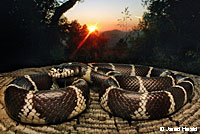 |
||||||||||||||||||||||||||||||||||||||||||||||||
| Adult, Shasta County © Luke Talltree |
Black and cream adult, Santa Cruz County © Zachary Lim | Adult, Kern County desert © Ryan Sikola | Adult, Santa Cruz County © Jared Heald |
||||||||||||||||||||||||||||||||||||||||||||||||
 |
 |
 |
 |
||||||||||||||||||||||||||||||||||||||||||||||||
| Adult swimming across stream, Orange County © Nicholas Hess |
Adult, Solano County © Lou Silva |
Adult, Marin County © Andre Giraldi | Adult, San Benito County © Yuval Helfman |
||||||||||||||||||||||||||||||||||||||||||||||||
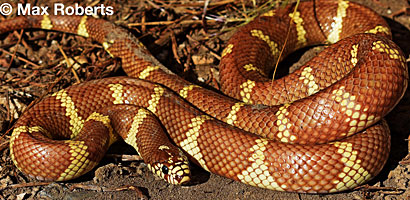 |
 |
 |
|||||||||||||||||||||||||||||||||||||||||||||||||
| Banded adult with pinkish brown and creamy yellow coloration from Santa Barbara County © Max Roberts |
Black and white adult, Shasta County | Black and white adult, Riverside County © Brody Trent |
|||||||||||||||||||||||||||||||||||||||||||||||||
 |
|||||||||||||||||||||||||||||||||||||||||||||||||||
| Adult from the Los Angeles County coast with a high number of bands (40) © Don Sterba | |||||||||||||||||||||||||||||||||||||||||||||||||||
 |
 |
 |
 |
||||||||||||||||||||||||||||||||||||||||||||||||
| Desert-phase adult, Riverside County © Emile Bado | Adult in habitat, Ventura County © Max Roberts |
Brown and yellow adult, Ventura County © Max Roberts |
Adult with pale yellow bands, Orange County © Brian Nann |
||||||||||||||||||||||||||||||||||||||||||||||||
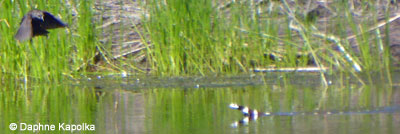 |
 |
 |
|||||||||||||||||||||||||||||||||||||||||||||||||
| A California Kingsnake swims in a pond where it was harassed by a pair of red-winged blackbirds, probably because they feared it was looking for a nest to raid. © Daphne Kapolka |
Adult from the Western side of the Santa Cruz Mountains, San Mateo County © Faris K |
Brown and white adult, Sacramento County © Zachary Cava | |||||||||||||||||||||||||||||||||||||||||||||||||
 |
 |
 |
 |
||||||||||||||||||||||||||||||||||||||||||||||||
| Adult, Sacramento County © Zachary Cava |
Adult, Gabilan Range, Monterey County © Benjamin German |
"Desert Phase" high-contrast black and white adult, Kern County © Zeev Nitzan Ginsburg |
Adult in habitat, San Luis Obispo County © Joel Germond | ||||||||||||||||||||||||||||||||||||||||||||||||
 |
 |
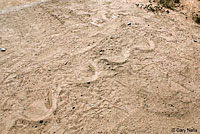 |
 |
||||||||||||||||||||||||||||||||||||||||||||||||
| The everted hemipenes of a male California Kingsnake. © Patrick Briggs | Adult in defensive pose with everted vent, Big Sur, Monterey County. The snake also released a foul-smelling odor. |
California Kingsnake tracks on a dusty road in San Diego County. | |||||||||||||||||||||||||||||||||||||||||||||||||
| Juveniles | |||||||||||||||||||||||||||||||||||||||||||||||||||
 |
 |
 |
 |
||||||||||||||||||||||||||||||||||||||||||||||||
| Juvenile in habitat, Alameda County © Faris K |
Juvenile, Los Angeles County © Huck Triggs |
Dark brown and cream juvenile, western Riverside County | |||||||||||||||||||||||||||||||||||||||||||||||||
 |
 |
 |
|||||||||||||||||||||||||||||||||||||||||||||||||
| Partially-scaleless banded juvenile, found by Lauren Powell in San Diego County © Dan Wells Notice the atypical skin with raised bumps instead of smooth scales. |
|||||||||||||||||||||||||||||||||||||||||||||||||||
| Mating Season Behavior | |||||||||||||||||||||||||||||||||||||||||||||||||||
 |
 |
 |
 |
||||||||||||||||||||||||||||||||||||||||||||||||
| These two adult California Kingsnakes were found on a back porch at the end of April in San Diego County. I'm not sure exactly what they are doing, but I believe that they are a male and a female in courtship behavior preliminary to copulation. They don't appear to be two males in combat because they are not wrestling each other very aggressively, but that is also possible. (If you know for sure what the behavior indicates, let me know.) |
|||||||||||||||||||||||||||||||||||||||||||||||||||
 |
 |
 |
 |
||||||||||||||||||||||||||||||||||||||||||||||||
| These three short videos show the same two snakes depicted in the stills above. | This picture shows what appear to be two males in combat in May in San Diego County. © Sean Kelly. (It's from a YouTube video which has been removed.) | ||||||||||||||||||||||||||||||||||||||||||||||||||
 |
|||||||||||||||||||||||||||||||||||||||||||||||||||
| This mating pair was observed on May 8th in a backyard in Sacramento County. © Kim Rowe | |||||||||||||||||||||||||||||||||||||||||||||||||||
| California Kingsnakes Feeding and Predation | |||||||||||||||||||||||||||||||||||||||||||||||||||
 |
 |
 |
 |
||||||||||||||||||||||||||||||||||||||||||||||||
| A striped phase California Kingsnake eating a juvenile Southern Pacific Rattlesnake in San Diego County. © Kimberly Deutsch | Sacramento County adult eating a juvenile Northern Pacific Rattlesnake. © Michele Coughlin |
||||||||||||||||||||||||||||||||||||||||||||||||||
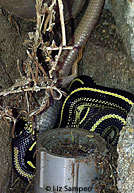 |
 |
 |
 |
||||||||||||||||||||||||||||||||||||||||||||||||
| This striped California Kingsnake is eating a San Diego Alligator Lizard in San Diego County. © Liz Samperi | California Kingsnakes are powerful predators capable of eating other snakes almost as large as they are. Here you can see one eating a Gophersnake. © Patrick Briggs |
Adult eating a lizard, Santa Catalina Island. © Nathan Smith | |||||||||||||||||||||||||||||||||||||||||||||||||
 |
 |
||||||||||||||||||||||||||||||||||||||||||||||||||
 |
 |
 |
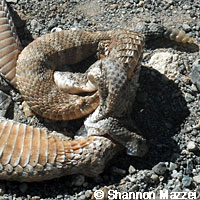 |
||||||||||||||||||||||||||||||||||||||||||||||||
| Stacy Holt with Death Valley National Park sent me the above six photos which were taken on 8/28/13 by National Park Service Employees Drew Kaiser and Shannon Mazzei. Drew and Shannon saw the snakes struggling at around 11 AM in near Towne Pass. A California Kingsnake was wrapped tightly around a Panamint Rattlesnake and the snakes were barely moving. Disturbed by the onlookers, the kingsnake retreated under a nearby bush. The rattlesnake was dead by that time, and appears to be biting itself, but was described as biting onto the kingsnake before it died. The kingsnake probably returned to swallow the rattlesnake after the people left. You can see other interesting wildlife sightings on the Death Valley National Park Facebook Page. |
|||||||||||||||||||||||||||||||||||||||||||||||||||
 |
 |
 |
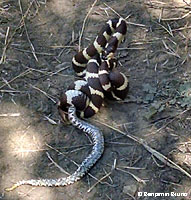 |
||||||||||||||||||||||||||||||||||||||||||||||||
| Contra Costa County adult killing a Pacific Gophersnake for dinner. © Tim Dayton | This California Kingsnake was discovered eating a juvenile Southern Pacific Rattlesnake in the Los Padres Mountains, Santa Barbara County © Benjamin Bruno | ||||||||||||||||||||||||||||||||||||||||||||||||||
 |
 |
 |
|||||||||||||||||||||||||||||||||||||||||||||||||
 |
 |
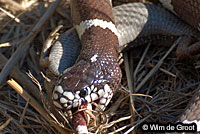 |
|||||||||||||||||||||||||||||||||||||||||||||||||
| This California Kingsnake was observed battling a California Alligator Lizard on a hiking trail in Santa Clara County. The alligator lizard clamped its jaws down on the snake's tail and held on tight even after it died. The snake had to pull and thrash about for more than 20 minutes before the lizard let go of the badly-damaged tail, finally allowing the snake to swallow it. © Wim de Groot | |||||||||||||||||||||||||||||||||||||||||||||||||||
 |
 |
 |
 |
||||||||||||||||||||||||||||||||||||||||||||||||
| A California Kingsnake eating a Southern Pacific Rattlesnake in Orange County © Ed Smith | |||||||||||||||||||||||||||||||||||||||||||||||||||
 |
 |
 |
 |
||||||||||||||||||||||||||||||||||||||||||||||||
| Adult snake looking for food in a bird nest box in Sonoma County © John McClain |
A juvenile California Kingsnake eats a San Bernardino Ring-necked Snake in Riverside County. © Mark Russell | The results of red-tailed hawk predation on a California Kingsnake, Riverside County © Jeff Ahrens |
A California Kingsnake has captured a San Diego Alligator Lizard in San Luis Obispo County and is constricting the lizard in its coils. © Grigory Heaton | ||||||||||||||||||||||||||||||||||||||||||||||||
 |
 |
 |
|||||||||||||||||||||||||||||||||||||||||||||||||
 |
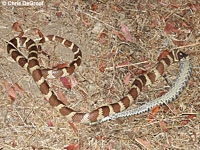 |
 |
|||||||||||||||||||||||||||||||||||||||||||||||||
| California Kingsnake eating a Southern Pacific Rattlesnake in Los Angeles County © Chris DeGroof | |||||||||||||||||||||||||||||||||||||||||||||||||||
 |
|||||||||||||||||||||||||||||||||||||||||||||||||||
| A California Kingsnake eating a Pacific Gophersnake in Santa Clara County © Faris K |
|||||||||||||||||||||||||||||||||||||||||||||||||||
| Naturally-Occurring Aberrant Morphs and Habitat | |||||||||||||||||||||||||||||||||||||||||||||||||||
 |
 |
||||||||||||||||||||||||||||||||||||||||||||||||||
| Go to Page 2 to see some other naturally-occurring aberrant morphs of California Kingsnakes. | Go to Page 3 to see pictures of some of the wide variety of habitats inhabited by California Kingsnakes. | ||||||||||||||||||||||||||||||||||||||||||||||||||
| Short Videos of Banded Kingsnakes (Videos of Striped and Aberrant Kingsnakes Here) |
|||||||||||||||||||||||||||||||||||||||||||||||||||
 |
 |
 |
 |
||||||||||||||||||||||||||||||||||||||||||||||||
| A very large banded kingsnake crawls off a road and up onto a rock face in a Kern County desert canyon at night. | A kingsnake crawls very quickly across the Colorado desert at night in San Diego County. | A beautiful banded adult California Kingsnake crosses a road at night in Alameda County, reminding me that my favorite thing about an encounter with a snake is watching it crawl away. | A distressed San Diego County California Kingsnake vibrates its tail. | ||||||||||||||||||||||||||||||||||||||||||||||||
 |
|||||||||||||||||||||||||||||||||||||||||||||||||||
| Click on the picture above to watch a YouTube video of a defensive California Kingsnake, sent to me by Paivi Kangas. | |||||||||||||||||||||||||||||||||||||||||||||||||||
|
|||||||||||||||||||||||||||||||||||||||||||||||||||
|
|||||||||||||||||||||||||||||||||||||||||||||||||||
|
The following conservation status listings for this animal are taken from the April 2024 State of California Special Animals List and the April 2024 Federally Listed Endangered and Threatened Animals of California list (unless indicated otherwise below.) Both lists are produced by multiple agencies every year, and sometimes more than once per year, so the conservation status listing information found below might not be from the most recent lists. To make sure you are seeing the most recent listings, go to this California Department of Fish and Wildlife web page where you can search for and download both lists: https://www.wildlife.ca.gov/Data/CNDDB/Plants-and-Animals. A detailed explanation of the meaning of the status listing symbols can be found at the beginning of the two lists. For quick reference, I have included them on my Special Status Information page. If no status is listed here, the animal is not included on either list. This most likely indicates that there are no serious conservation concerns for the animal. To find out more about an animal's status you can also go to the NatureServe and IUCN websites to check their rankings. Check the current California Department of Fish and Wildlife sport fishing regulations to find out if this animal can be legally pursued and handled or collected with possession of a current fishing license. You can also look at the summary of the sport fishing regulations as they apply only to reptiles and amphibians that has been made for this website. This snake is not included on the Special Animals List, which indicates that there are no significant conservation concerns for it in California. |
||
| Organization | Status Listing | Notes |
| NatureServe Global Ranking | ||
| NatureServe State Ranking | ||
| U.S. Endangered Species Act (ESA) | None | |
| California Endangered Species Act (CESA) | None | |
| California Department of Fish and Wildlife | None | |
| Bureau of Land Management | None | |
| USDA Forest Service | None | |
| IUCN | ||
|
|
||
Return to the Top
© 2000 -




